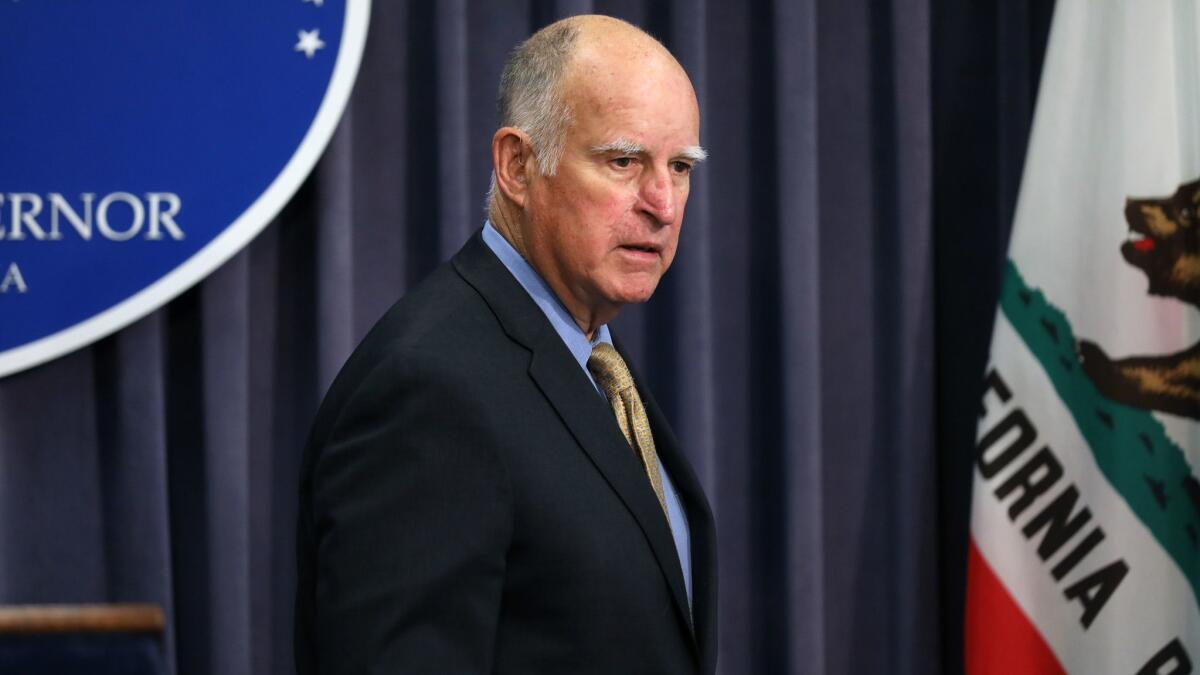Gov. Jerry Brown extends National Guard border effort

Gov. Jerry Brown has extended a federally funded National Guard effort targeting transnational gangs, human traffickers and smugglers.
Brown’s order extends until at least the end of March a mobilization requested by the Trump administration to deploy Guard troops along the nation’s southern border states.
The governor in April said he would accept the federal funding to deploy an additional 400 California National Guard personnel, but added that the troops would not be used “to build a new wall,” “round up women and children or detain people escaping violence and seeking a better life,” nor to enforce federal immigration laws.
Rather, Brown said the funding would be used to support efforts targeting transnational gangs, human traffickers, and illegal firearm and drug smugglers at the border, on the coast and throughout the state.
President Trump at one point criticized Brown’s statement, saying that the 400 California National Guard troops would be deployed “to do nothing,” and that the federal government “will not be paying for Gov. Brown’s charade.”
But the Pentagon clarified that the mission would indeed be funded, and Secretary of Homeland Security Kirstjen Nielsen thanked Brown for his support.
Before the additional troops were deployed, 250 California National Guard personnel had already been assigned to work on transnational crimes, including 55 who are stationed at the border.
Brown said California has long supported using the National Guard to support efforts on transnational crimes. The state agreed to such deployments in 2006 under President George W. Bush and in 2010 under President Barack Obama.
In the spring, Trump made an off-the-cuff remark about “guarding our border with the military” until his promised wall between the United States and Mexico is built. The White House clarified that the president intended to mobilize the National Guard rather than active-duty troops; deploying active-duty troops for domestic law enforcement is prohibited under a federal law known as the Posse Comitatus Act.
Defense Secretary James N. Mattis later signed an order to send up to 4,000 National Guard troops from various states to the border, but barred them from interacting with migrants detained by the U.S. Border Patrol in most cases.
Presidents have used troops to help secure the border for more than a century. Obama authorized up to 1,200 National Guard members to assist the Border Patrol, mostly in Arizona, for a year in 2010. They generally provided surveillance, riding in Border Patrol vehicles and using binoculars, night-vision goggles and drones to spot people crossing the border, then reporting such incursions to federal agents.
Bush authorized about 6,000 National Guard troops from 2006 to 2008 to the border in California, Arizona and New Mexico.
Governors also can mobilize National Guard units to assist with law enforcement in declared emergencies, which are generally limited in scope and time. State governments usually bear those costs.
Times staff writers John Myers, Noah Bierman and David S. Cloud contributed to this report.
More to Read
Sign up for Essential California
The most important California stories and recommendations in your inbox every morning.
You may occasionally receive promotional content from the Los Angeles Times.










